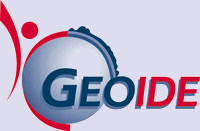Problem Statement
Positioning from space, currently almost solely based on the Global Positioning System (GPS), has become nearly omnipresent in an ever growing variety of applications, both civilian and military. The global revenues of GPS equipment and services is currently at 6 billion US$, with forecasts to double by 2007, with 75% of this expenditure in the North American market. This tremendous commercial push has led to modernization plans. In this proposal, we identify two major trends in terms of modernizing Global Navigation Satellite Systems (GNSS). The first is an enhancement of the GPS system itself, by means of the provision of new signals and an improved generation of satellites (GPS II-M and GPS III). The second is the development of new satellite systems. Today, two satellite systems besides GPS exist: the Russian Glonass and the Chinese Beidou. However, the former is incomplete due to financial problems and the latter is a closed regional system. There is great expectation with the new European Galileo system now under development. Our proposal focuses on the modernization of GNSS with GPS II-M and GPS III and the Galileo system. Advantages coming from a modernized GNSS include improved positioning and navigation performance by means of doubling the availability of signals, impacting single point positioning accuracy, faster and more reliable positioning techniques including those based on carrier phase ambiguity resolution. Due to its status as a co-operating State with the European Space Agency, Canada participates in Galileo development (via the Canadian Space Agency) with funding in the order of €7.4M and NavCanada plans to host an EGNOS (system precursor of Galileo) station in Moncton, N.B.
These two systems (GPS and Galileo), whether used together or in parallel, will provide tremendous commercial opportunities for Canadian enterprises. Currently, Canada is the second largest exporter of GNSS products and services, only after the U.S. The forecast is for this market to expand by around 25% per year. If Canada wants to maintain or enhance its current position and significant presence in this market, a renewed strong effort in R&D is needed.
